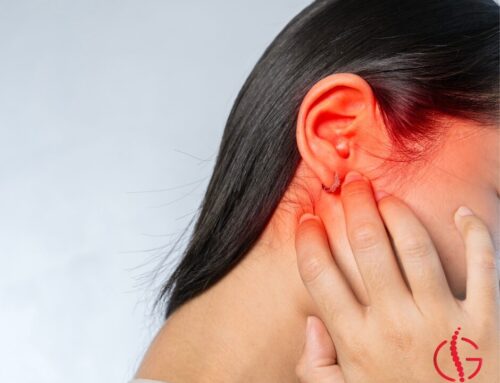The Real Fix for Slouching Shoulders
Beyond Adjustments

We work hard caring for people with headaches, neck pain, shoulder pain and upper back pain. While chiropractic adjustments can provide immediate relief, they address only part of the issue. To achieve lasting improvement, it’s essential to engage in exercises that strengthen and stretch the muscles responsible for maintaining proper posture. As highlighted by Harvard Health, exercises like scapula squeezes and modified planks are effective in correcting slouching shoulders

The role of shoulder positioning
One of the most common considerations that defeats long term success in the care of headache and neck/upper back pain is dysfunctional bearing of the scapulae, which usually occurs as shoulders which have rounded forward. This is usually coupled with increased thoracic curvature and disturbed bearing of the neck and head which we described generally in our discussion of Scrolliosis. In this article, we would like to speak to the specifics of shoulder blades and particularly, one unique strategy for effectively changing the bearing of your shoulders.
Key muscle imbalances

How to stretch the pectoralis minor
How to strengthen the shoulder retractors
Equipment options for horizontal rowing
What is a row?
How to perform a pre-exhaust row
With pre-exhaust, we go a step further. Performing the rowing movement fully to include the elbows, shoulders and shoulder blades is further enhanced in its impact on shoulder retractors if we first pre-exhaust the shoulder retractors (lower traps and rhomboids). We’re going to do this by shrugging our shoulders back and allowing them to be pulled forward with the resistance, effectively performing a horizontal shrug against the resistance of either the cable or the resistance bands. Performing 8 to 10 repetitions of this horizontal shrugging movement, deliberately engaging the shoulder blades and the muscles pulling the shoulder blades back and, at that point, taking a moment to stretch forward with the resistance and then complete another 8 to 10 or 12 repetitions of rowing movements, as fully as possible. With this last half of the row you’re doing a the movement with fresh biceps, lats and deltoids but with pre-exhausted rhomboids and lower traps. This can be very effective in getting improved engagement and responsiveness out of the muscles that are going to improve your posture and balance the musculature of your upper back.
What about getting adjusted?
Healed, fully moving and aligned segments are critical to the success of rehabilitation of any sort. Find someone that uses osseous adjusting.
Final thoughts
This is a deeper dive, and I know it’s not for everyone. There are people for whom we think this will be helpful and I don’t see any reason why it shouldn’t be shared with interested people who are trying to help themselves. We hope this has been of service.
Godman, Heidi. “Is It Too Late to Save Your Posture?” Harvard Health, 9 Jan. 2025, https://www.health.harvard.edu/exercise-and-fitness/is-it-too-late-to-save-your-posture
.
Written by: Donaid Seals D.C
Dr. Seals is a practicing Doctor of Chiropractic with over 25 years of experience caring for people. His thinking is the product of his education, practice experience and many years in the natural foods and fitness industry. He has become living proof that old muscleheads don’t die-or fade away; sometimes they grow up to bring real-world expertise to the clinical picture. Traditional background information is available here.
Disclaimer: Consult with a healthcare provider before starting any new supplement/workout regimen, especially if you have underlying health conditions or take medications. The entire contents of this website are based upon the opinions of Dr. Seals, unless otherwise noted. Individual articles are based upon the opinions of the respective author, who retains copyright as marked. The information on this website is not intended to replace a one-on-one relationship with a qualified health care professional and is not intended as medical advice. It is intended as a sharing of knowledge and information from the research and experience of Dr. Seals and his community. Dr. Seals encourages you to make your own health care decisions based upon your research and in partnership with a qualified health care professional.


